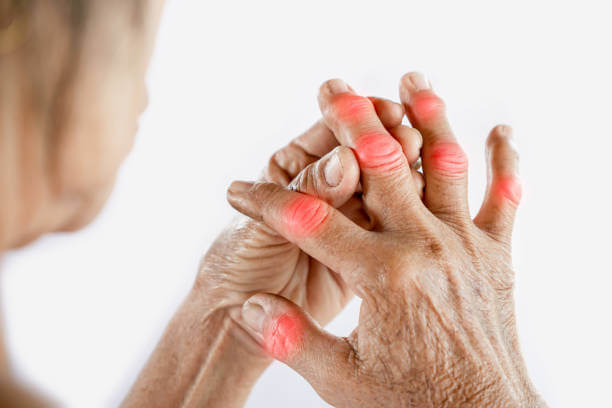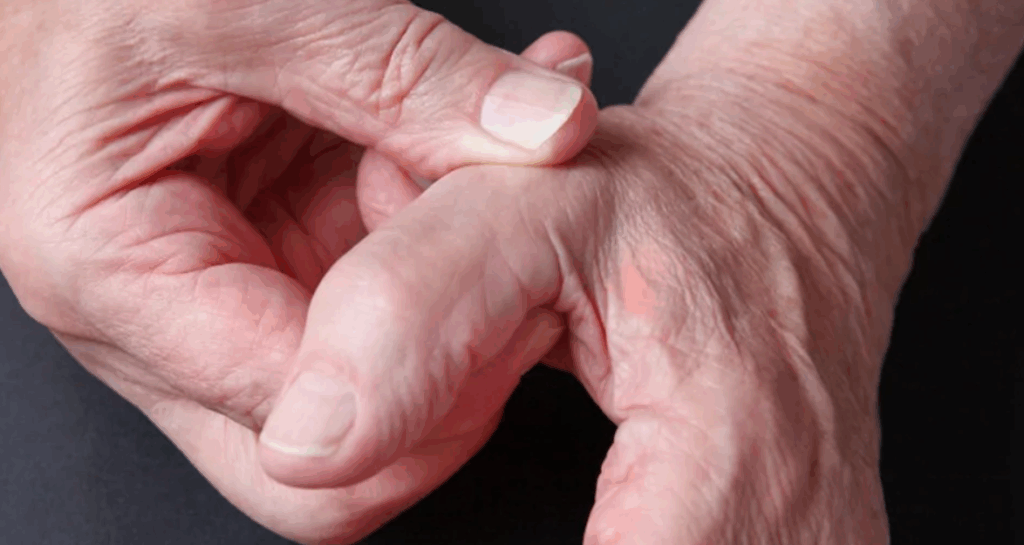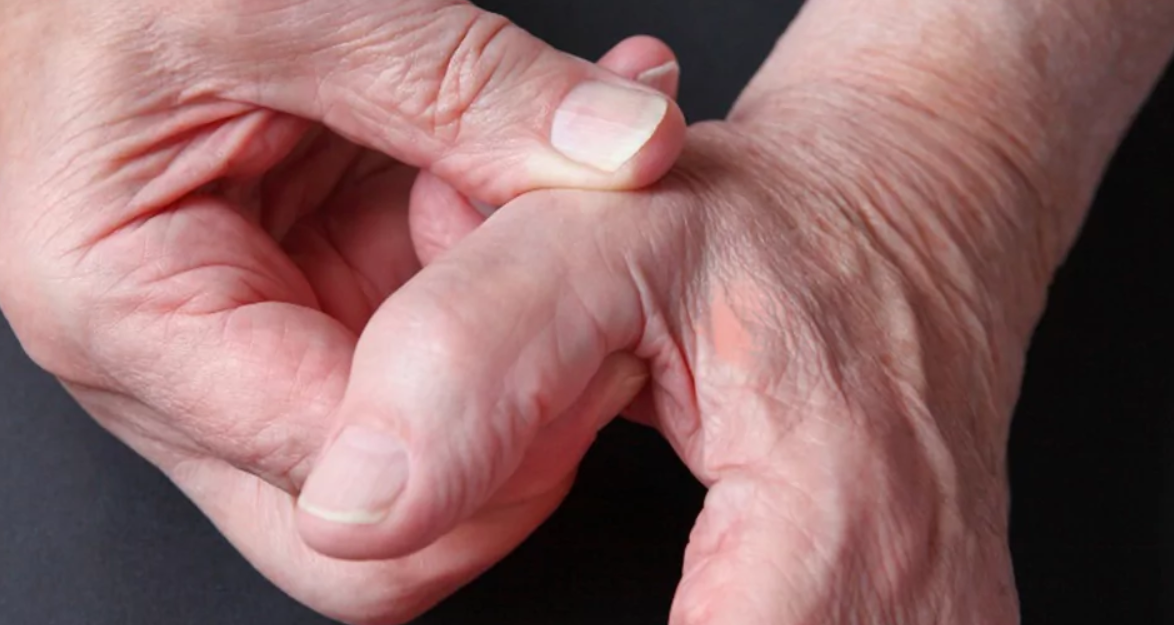Natural Remedies for Arthritis in Hands: Relieve Pain and Stiffness Without Medication
- Understanding Hand Arthritis: What’s Really Going On?
- Early Symptoms and How They Progress Over Time
- Why Go Natural? The Case for Drug-Free Arthritis Relief
- Top Natural Remedies for Pain and Stiffness in Hands
- The Role of Diet in Reducing Hand Inflammation
- Herbal and Plant-Based Therapies for Hand Arthritis
- How Heat and Cold Therapy Work for Arthritic Hands
- Stages of Hand Arthritis and Natural Strategies at Each Phase
- Daily Hand Exercises to Improve Mobility Naturally
- Managing Stress and Its Impact on Hand Arthritis
- Sleep and Recovery: Supporting Healing Through Rest
- Long-Term Risks of Untreated Hand Arthritis
- Ergonomic Tools and Home Adjustments for Arthritic Hands
- Can Hand Arthritis Be Reversed Naturally?
- When to See a Doctor Despite Natural Treatment
- Building a Long-Term Natural Arthritis Plan That Works
- FAQ

Understanding Hand Arthritis: What’s Really Going On?
Hand arthritis is more than just a nuisance—it’s a chronic, often progressive condition that affects your ability to do everyday tasks like buttoning a shirt, opening jars, or even writing. It happens when the cartilage that cushions your finger and wrist joints begins to break down, leading to bone-on-bone friction, swelling, and pain.
There are several types of arthritis that can affect the hands, but the two most common are osteoarthritis (caused by wear and tear) and rheumatoid arthritis (an autoimmune disorder). In osteoarthritis, joint degeneration occurs gradually over time. In rheumatoid arthritis, the immune system mistakenly attacks the joint lining, causing inflammation and deformity.
Symptoms usually include joint stiffness (especially in the morning), visible swelling, aching pain, and reduced range of motion. These signs may start mild but tend to worsen without consistent care. Understanding the root of the condition helps in choosing the right natural strategies to manage it.
Early Symptoms and How They Progress Over Time
Arthritis in the hands doesn’t appear overnight—it develops slowly, often starting with subtle signs that are easy to overlook. One of the earliest symptoms is morning stiffness, where your fingers feel tight or locked up for several minutes to an hour. Another common early sign is a dull ache after using your hands for prolonged periods.
As the condition progresses, you may notice joint swelling, warmth, and tenderness, along with occasional clicking or popping when you move your fingers. Over time, tasks that require grip strength—like turning a doorknob or holding a pen—become more difficult.
In advanced stages, joints may become visibly enlarged or deformed, particularly in the fingers. These changes are often permanent, which is why early and ongoing management is so important—even if you’re taking a natural, non-pharmaceutical approach.
Why Go Natural? The Case for Drug-Free Arthritis Relief
While medications like NSAIDs and corticosteroids can provide temporary relief, many people with hand arthritis seek natural alternatives to avoid long-term side effects such as stomach irritation, high blood pressure, or dependency. Natural remedies work with your body’s own healing systems to reduce inflammation, improve joint mobility, and restore hand function.
Holistic care also focuses on addressing root causes rather than just numbing symptoms. For instance, inflammation from diet or stress can be managed through lifestyle changes, while joint stiffness can be improved with movement-based therapies and warm compresses. Many natural approaches can be safely combined with conventional treatments or used as preventive care to slow the progression of the disease.
Ultimately, going natural empowers you to take control of your health, often with fewer risks and more sustainable long-term outcomes.
Top Natural Remedies for Pain and Stiffness in Hands
There is no one-size-fits-all cure for arthritis, but several natural therapies have shown consistent results in reducing hand pain, improving flexibility, and minimizing swelling. These remedies focus on lowering inflammation, supporting joint tissue, and gently restoring movement.
- Warm water soaks help relax tense muscles and increase blood flow, especially in the morning or before bed. A simple bowl of warm (not hot) water with Epsom salt can soothe stiffness in 10–15 minutes.
- Topical treatments, like arnica or capsaicin creams, can temporarily relieve localized joint pain by increasing circulation or blocking pain signals.
- Hand exercises such as gentle stretching and grip-strength movements encourage joint lubrication and can prevent further stiffness.
- Turmeric supplements (with curcumin) are widely praised for their anti-inflammatory properties and are considered safe for long-term use when taken with food.
These options are best used consistently and tailored to your daily routine. While the effects may not be instant like over-the-counter meds, many users report lasting improvements after regular use over a few weeks.

The Role of Diet in Reducing Hand Inflammation
What you eat plays a powerful role in how your body responds to inflammation. For people with hand arthritis, adjusting the diet can significantly reduce daily joint pain, improve flexibility, and even slow the progression of the disease. The goal is to minimize inflammatory foods while boosting nutrients that support joint health.
Highly processed items like refined sugars, trans fats, and red meats can worsen inflammation. On the other hand, a diet rich in omega-3 fatty acids (found in flaxseed, walnuts, and fatty fish), vitamin C, and antioxidants can calm inflamed tissues and reduce oxidative stress in joints.
Some people follow a Mediterranean-style diet, which emphasizes fresh vegetables, legumes, olive oil, fish, and whole grains—foods linked to lower inflammation and better joint health. Others explore elimination diets to identify and remove food triggers such as gluten or dairy.
Though dietary changes won’t cure arthritis, they can work in synergy with other natural remedies to provide long-term relief and reduce flare-ups.
Herbal and Plant-Based Therapies for Hand Arthritis
Nature offers a rich array of herbs and plants with anti-inflammatory and analgesic properties. When used properly, these remedies can offer real relief—especially for people looking to reduce their reliance on pain medication.
- Turmeric, particularly its active compound curcumin, helps block inflammatory pathways and has been studied extensively for its impact on arthritis pain.
- Boswellia serrata, also known as Indian frankincense, is another herbal extract with strong anti-inflammatory effects, often used in supplement form.
- Ginger, taken as tea or in capsule form, can reduce joint stiffness and improve circulation.
- Willow bark, a natural source of salicin (similar to aspirin), may ease mild to moderate joint pain.
These herbs are generally well tolerated but can interact with certain medications, especially blood thinners. Before starting any herbal supplement, it’s best to consult a healthcare provider familiar with integrative medicine.
How Heat and Cold Therapy Work for Arthritic Hands
One of the simplest and most effective natural methods for managing arthritis symptoms is temperature therapy. Both heat and cold serve different purposes, and knowing when to use each can make a noticeable difference in how your hands feel.
Heat therapy—in the form of warm compresses, heated gloves, or paraffin wax baths—helps increase blood flow, relax muscles, and ease stiffness, especially in the morning or before activity. It’s ideal for chronic pain and tightness that builds gradually.
Cold therapy, such as ice packs or cool gel pads, helps reduce swelling and inflammation after activity or during flare-ups. It numbs sore areas and can be especially helpful when joints feel hot or visibly inflamed.
Alternating between heat and cold during the day can be an effective cycle to manage both stiffness and swelling. This form of therapy is inexpensive, low-risk, and easily applied at home.

Stages of Hand Arthritis and Natural Strategies at Each Phase
Understanding what stage of arthritis you’re in can help guide the types of natural remedies that will work best. Here’s a simplified breakdown:
| Stage | Symptoms | Natural Approach |
| Early | Mild stiffness, aching after use | Stretching, warm soaks, anti-inflammatory diet |
| Moderate | Persistent swelling, occasional flare-ups | Turmeric, hand exercises, heat/cold therapy |
| Advanced | Joint deformity, limited motion, daily pain | Adaptive tools, paraffin wax, herbal supplements |
| Severe/Chronic | Severe deformity, pain even at rest, loss of function | Occupational therapy, anti-inflammatory nutrition |
Matching your treatment plan to your current phase can make your efforts more targeted and effective. Even in late-stage arthritis, natural strategies can improve quality of life and reduce the need for surgical intervention.
Daily Hand Exercises to Improve Mobility Naturally
Movement is medicine—especially when it comes to hand arthritis. Gentle, consistent hand exercises help maintain joint mobility, strengthen surrounding muscles, and reduce stiffness. Over time, they may even delay the progression of joint degeneration and improve hand coordination.
Start with range-of-motion exercises like opening and closing the fist, spreading the fingers wide, and touching each fingertip to the thumb. These movements lubricate the joints and reduce morning tightness. As strength improves, you can incorporate resistance work using soft putty or a hand therapy ball to build stability.
Consistency is key. Even five to ten minutes daily can lead to noticeable improvements in flexibility and pain levels. It’s best to perform exercises when your hands are warm—after a shower or warm soak—to reduce discomfort. Avoid forcing painful movements; the goal is gentle activation, not strain.
These movements don’t just benefit the joints—they help you retain independence in tasks like writing, cooking, or buttoning clothing.

Managing Stress and Its Impact on Hand Arthritis
Stress isn’t just a mental burden—it can directly affect physical inflammation, especially in autoimmune forms of arthritis like rheumatoid arthritis. Stress hormones like cortisol and adrenaline can worsen immune dysregulation, trigger flare-ups, and amplify the perception of pain.
Mind-body techniques such as deep breathing, yoga, meditation, and progressive muscle relaxation are proven to reduce stress levels and lower systemic inflammation. In particular, guided meditation and mindfulness practices can help arthritis patients gain better control over pain perception and emotional resilience.
Journaling, spending time in nature, or engaging in creative hobbies also helps redirect focus and ease emotional tension. For many people, reducing stress results in fewer flare-ups and greater control over their symptoms.
Managing your emotional state isn’t just a luxury—it’s a vital part of your overall arthritis treatment plan.
Sleep and Recovery: Supporting Healing Through Rest
Quality sleep is one of the most underappreciated aspects of arthritis management. During deep sleep, the body releases hormones that reduce inflammation and repair tissue. However, arthritis pain can make falling asleep—or staying asleep—a nightly challenge.
To support restful sleep, it’s important to create a consistent bedtime routine. Using warm compresses or a paraffin wax bath before bed can ease joint tension. Herbal teas like chamomile or valerian may promote relaxation, and ergonomic pillows or wrist splints can help you maintain joint alignment overnight.
Reducing screen time before bed, keeping the room cool and dark, and avoiding heavy meals late in the evening also support better sleep. In more persistent cases, natural sleep aids such as melatonin or magnesium glycinate may help—but consult your provider before starting supplements.
Good sleep is restorative. When you sleep well, your body is better equipped to manage pain and inflammation during the day.
Long-Term Risks of Untreated Hand Arthritis
Ignoring hand arthritis, even in its early stages, can lead to irreversible joint damage and significant loss of hand function. Without proper care, cartilage continues to degrade, causing the bones in the joint to rub directly against each other. This results in chronic pain, deformity, and restricted movement.
In rheumatoid arthritis, uncontrolled inflammation can spread beyond the joints to affect organs like the lungs, heart, and blood vessels. Even in osteoarthritis, compensating for pain by avoiding movement can lead to muscle atrophy, joint instability, and dependence on others for daily tasks.
Left unmanaged, arthritis can impact your quality of life, emotional health, and independence. That’s why taking action—especially with gentle, natural remedies—is so important. Early intervention doesn’t just relieve symptoms—it helps you preserve long-term joint health.
Ergonomic Tools and Home Adjustments for Arthritic Hands
Living with arthritis in the hands means daily activities can become challenging. Fortunately, making a few smart changes to your environment and using ergonomically designed tools can significantly reduce strain and pain.
Look for adaptive tools like wide-handled utensils, jar openers, or pens with cushioned grips. In the kitchen, spring-loaded scissors and lightweight cookware help reduce joint stress. Around the house, using lever-style door handles instead of knobs and installing faucet extenders can improve ease of use without needing much grip strength.
Even tech accessories matter. A vertical computer mouse, cushioned keyboard pad, or phone stylus can help prevent overuse flare-ups. These changes may seem minor, but they make everyday tasks more comfortable, protect vulnerable joints, and reduce the likelihood of inflammation triggered by repetitive motion.
Can Hand Arthritis Be Reversed Naturally?
Unfortunately, arthritis—whether osteoarthritis or rheumatoid—cannot be reversed, as joint damage is usually permanent once it occurs. However, progression can be slowed and symptoms significantly improved through consistent natural care.
Cartilage doesn’t regrow, but inflammation can be minimized, pain can be managed, and joint function can be preserved with proper nutrition, movement, and stress reduction. Many people living with hand arthritis find that a combination of natural remedies reduces their need for medications or delays surgical intervention.
Success isn’t about full reversal—it’s about maintaining as much mobility and comfort as possible. With consistent effort, it’s entirely possible to keep arthritis from taking control of your life.
When to See a Doctor Despite Natural Treatment
While natural remedies are powerful, there are times when professional medical input is essential. If hand pain becomes severe, constant, or begins interfering with sleep, work, or daily tasks, don’t wait. Also seek care if:
- Joints become visibly deformed
- You notice a sharp decline in grip strength
- Symptoms appear suddenly or affect both hands symmetrically
- There’s redness or heat suggesting infection or intense inflammation
Doctors may recommend imaging (like X-rays or MRI), refer you to a rheumatologist, or discuss options like steroid injections or surgery. Even if you’re committed to a natural approach, having a diagnosis ensures you’re not overlooking a serious condition.
Building a Long-Term Natural Arthritis Plan That Works
The key to success with natural remedies is consistency. It’s not about doing everything at once—it’s about making sustainable, supportive changes that work for your body. That might mean starting with a morning hand soak and some simple stretches, then gradually adding anti-inflammatory foods or herbal supplements.
Track your progress using a symptom journal: note what works, when flare-ups occur, and what your hands can or cannot do. This helps you fine-tune your plan and stay accountable. Involve a physical therapist or holistic practitioner if you need structure or motivation.
Over time, your customized approach becomes part of your routine. While it won’t eliminate arthritis, it will reduce pain, protect your joints, and help you maintain an active, independent lifestyle.
FAQ
What is the most common type of arthritis in the hands?
The most common form is osteoarthritis, which results from gradual wear and tear of the cartilage between joints. It typically affects the base of the thumb, the knuckles of the fingers, and sometimes the wrists. Rheumatoid arthritis, an autoimmune condition, is also common in the hands, but it presents with more systemic inflammation and often affects both hands symmetrically.
Can hand arthritis go away on its own?
No, arthritis is a chronic condition and does not disappear on its own. However, with proper natural treatment—including movement, anti-inflammatory nutrition, and stress management—many people find that their symptoms improve dramatically, and progression slows down. Ignoring it, on the other hand, typically leads to worsening pain and reduced function over time.
Are there any proven natural supplements for arthritis in hands?
Yes, several natural supplements have shown benefit. Turmeric (curcumin) is one of the most researched for its anti-inflammatory effects. Others include omega-3 fatty acids, Boswellia (frankincense), ginger, and glucosamine/chondroitin. Always speak to a healthcare provider before starting supplements, especially if you’re on medication or have other conditions.
How long does it take for natural remedies to work?
Natural remedies usually take weeks, not days, to show results. While topical relief like warm soaks may offer immediate comfort, deeper changes—like those from diet, supplements, or exercise—often require at least 4 to 8 weeks of consistent application. Patience and routine are key to seeing sustained improvement.
Can diet alone treat arthritis in the hands?
Diet alone may not completely treat arthritis, but it plays a crucial supportive role. Reducing foods that trigger inflammation (like sugar, processed meats, and refined grains) and increasing anti-inflammatory nutrients (like leafy greens, omega-3s, and antioxidants) can reduce joint swelling and pain. It works best when combined with other natural therapies.
Is it safe to use heat every day on arthritic hands?
Yes, applying gentle heat daily is generally safe and beneficial. Warmth improves circulation, reduces stiffness, and prepares the joints for movement. Use warm compresses, heating pads, or paraffin wax for up to 15–20 minutes at a time, especially in the morning or before hand exercises.
What exercises are safe for hand arthritis?
Gentle exercises like fist clenches, finger stretches, thumb rotations, and wrist circles are safe and effective. Avoid any movement that causes sharp pain or feels unstable. Doing these exercises once or twice daily helps maintain joint flexibility and reduce stiffness.
Can stress really make arthritis worse?
Yes, stress triggers hormonal responses in the body—especially cortisol and adrenaline—which can increase inflammation and pain sensitivity. Stress management techniques like meditation, yoga, or breathwork can help reduce the severity and frequency of arthritis flare-ups, especially in autoimmune forms like rheumatoid arthritis.
What is paraffin wax therapy and does it help?
Paraffin wax therapy involves dipping the hands into warm, melted wax to coat them with heat-retaining layers. This deep, moist heat penetrates joints and relieves stiffness and pain. It’s especially useful before stretching exercises and can be safely done at home with a paraffin bath kit.
Is cold therapy useful for arthritis too?
Cold therapy is effective for reducing inflammation and swelling, particularly after activity or during a flare-up. Apply an ice pack or cold gel pad for 10–15 minutes, especially when the joints feel hot, tender, or visibly swollen. Don’t apply ice directly to the skin—wrap it in a cloth.
How do I know if natural remedies are working?
Track your symptoms over time—notice changes in pain levels, grip strength, range of motion, and frequency of flare-ups. You may also find tasks like opening jars or typing become easier. Improvements are usually gradual, so keeping a daily or weekly journal helps you recognize progress.
Can I use natural remedies alongside my medication?
In most cases, yes. Natural therapies like diet, heat, exercise, or turmeric are complementary to medications. However, always check with your doctor before starting herbs or supplements, as some (like turmeric or willow bark) can interact with blood thinners or NSAIDs.
Is it normal for symptoms to come and go?
Yes, arthritis often has flare-ups and remissions. Factors like stress, weather changes, overuse, or diet can trigger bad days, followed by periods of reduced symptoms. This cycle is normal in both osteoarthritis and rheumatoid arthritis, and natural remedies help reduce the intensity of flare-ups over time.
Are ergonomic tools really that helpful?
Absolutely. Tools with padded grips, larger handles, or spring mechanisms reduce the effort required to perform tasks, easing the strain on painful joints. Small changes—like using a cushioned pen or a jar opener—can make daily routines more manageable and reduce flare-up risk.
When should I consider surgery for hand arthritis?
Surgery is usually considered only when non-surgical methods no longer provide relief, and your hand function is significantly impaired. Common procedures include joint fusion, joint replacement, or tendon repair. However, many people delay or avoid surgery for years by using natural and conservative treatments consistently.










